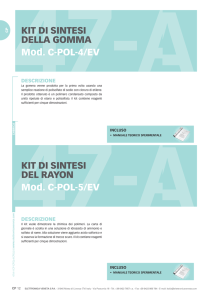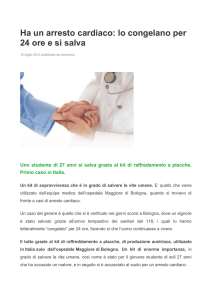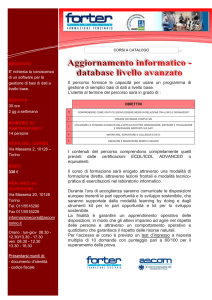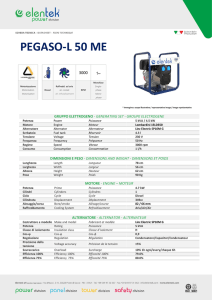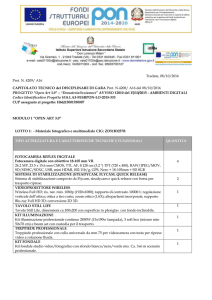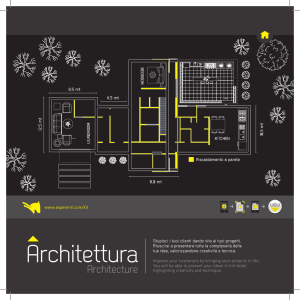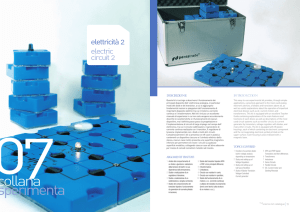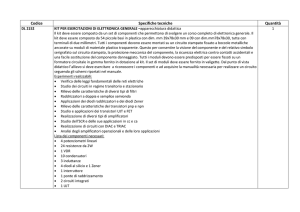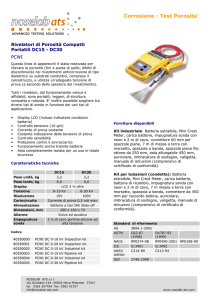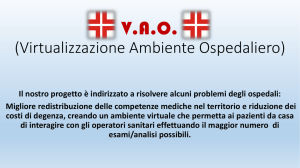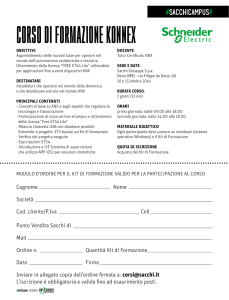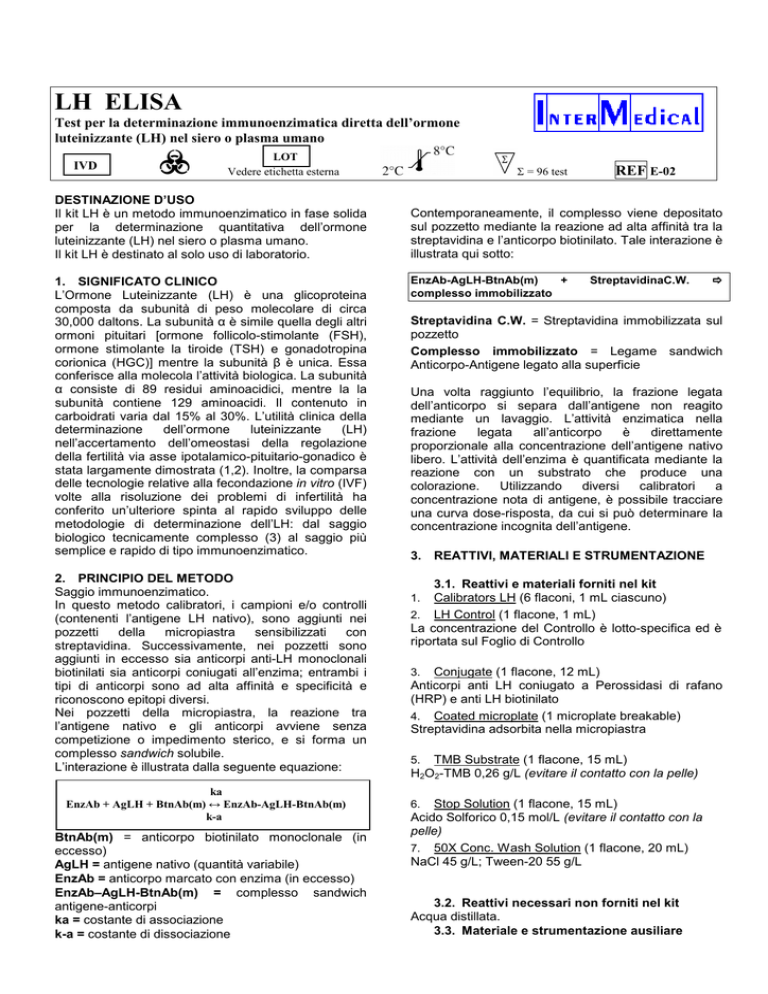
LH ELISA
Test per la determinazione immunoenzimatica diretta dell’ormone
luteinizzante (LH) nel siero o plasma umano
IVD
LOT
Vedere etichetta esterna
DESTINAZIONE D’USO
Il kit LH è un metodo immunoenzimatico in fase solida
per la determinazione quantitativa dell’ormone
luteinizzante (LH) nel siero o plasma umano.
Il kit LH è destinato al solo uso di laboratorio.
1. SIGNIFICATO CLINICO
L’Ormone Luteinizzante (LH) è una glicoproteina
composta da subunità di peso molecolare di circa
30,000 daltons. La subunità α è simile quella degli altri
ormoni pituitari [ormone follicolo-stimolante (FSH),
ormone stimolante la tiroide (TSH) e gonadotropina
corionica (HGC)] mentre la subunità β è unica. Essa
conferisce alla molecola l’attività biologica. La subunità
α consiste di 89 residui aminoacidici, mentre la la
subunità contiene 129 aminoacidi. Il contenuto in
carboidrati varia dal 15% al 30%. L’utilità clinica della
determinazione
dell’ormone
luteinizzante
(LH)
nell’accertamento dell’omeostasi della regolazione
della fertilità via asse ipotalamico-pituitario-gonadico è
stata largamente dimostrata (1,2). Inoltre, la comparsa
delle tecnologie relative alla fecondazione in vitro (IVF)
volte alla risoluzione dei problemi di infertilità ha
conferito un’ulteriore spinta al rapido sviluppo delle
metodologie di determinazione dell’LH: dal saggio
biologico tecnicamente complesso (3) al saggio più
semplice e rapido di tipo immunoenzimatico.
2. PRINCIPIO DEL METODO
Saggio immunoenzimatico.
In questo metodo calibratori, i campioni e/o controlli
(contenenti l’antigene LH nativo), sono aggiunti nei
pozzetti
della
micropiastra
sensibilizzati
con
streptavidina. Successivamente, nei pozzetti sono
aggiunti in eccesso sia anticorpi anti-LH monoclonali
biotinilati sia anticorpi coniugati all’enzima; entrambi i
tipi di anticorpi sono ad alta affinità e specificità e
riconoscono epitopi diversi.
Nei pozzetti della micropiastra, la reazione tra
l’antigene nativo e gli anticorpi avviene senza
competizione o impedimento sterico, e si forma un
complesso sandwich solubile.
L’interazione è illustrata dalla seguente equazione:
ka
EnzAb + AgLH + BtnAb(m) ↔ EnzAb-AgLH-BtnAb(m)
k-a
BtnAb(m) = anticorpo biotinilato monoclonale (in
eccesso)
AgLH = antigene nativo (quantità variabile)
EnzAb = anticorpo marcato con enzima (in eccesso)
EnzAb–AgLH-BtnAb(m) = complesso sandwich
antigene-anticorpi
ka = costante di associazione
k-a = costante di dissociazione
Σ = 96 test
REF E-02
Contemporaneamente, il complesso viene depositato
sul pozzetto mediante la reazione ad alta affinità tra la
streptavidina e l’anticorpo biotinilato. Tale interazione è
illustrata qui sotto:
EnzAb-AgLH-BtnAb(m)
+
complesso immobilizzato
StreptavidinaC.W.
Streptavidina C.W. = Streptavidina immobilizzata sul
pozzetto
Complesso immobilizzato = Legame sandwich
Anticorpo-Antigene legato alla superficie
Una volta raggiunto l’equilibrio, la frazione legata
dell’anticorpo si separa dall’antigene non reagito
mediante un lavaggio. L’attività enzimatica nella
frazione
legata
all’anticorpo
è
direttamente
proporzionale alla concentrazione dell’antigene nativo
libero. L’attività dell’enzima è quantificata mediante la
reazione con un substrato che produce una
colorazione.
Utilizzando
diversi
calibratori
a
concentrazione nota di antigene, è possibile tracciare
una curva dose-risposta, da cui si può determinare la
concentrazione incognita dell’antigene.
3. REATTIVI, MATERIALI E STRUMENTAZIONE
3.1. Reattivi e materiali forniti nel kit
Calibrators LH (6 flaconi, 1 mL ciascuno)
2. LH Control (1 flacone, 1 mL)
La concentrazione del Controllo è lotto-specifica ed è
riportata sul Foglio di Controllo
1.
Conjugate (1 flacone, 12 mL)
Anticorpi anti LH coniugato a Perossidasi di rafano
(HRP) e anti LH biotinilato
4. Coated microplate (1 microplate breakable)
Streptavidina adsorbita nella micropiastra
3.
TMB Substrate (1 flacone, 15 mL)
H2O2-TMB 0,26 g/L (evitare il contatto con la pelle)
5.
Stop Solution (1 flacone, 15 mL)
Acido Solforico 0,15 mol/L (evitare il contatto con la
pelle)
7. 50X Conc. Wash Solution (1 flacone, 20 mL)
NaCl 45 g/L; Tween-20 55 g/L
6.
3.2. Reattivi necessari non forniti nel kit
Acqua distillata.
3.3. Materiale e strumentazione ausiliare
Dispensatori automatici.
Lettore per micropiastre (450 nm)
Note
Conservare i reattivi a 2÷8°C, al riparo dalla luce.
Aprire la busta del reattivo 4 (Coated microplate)
solo dopo averla riportata a temperatura ambiente e
chiuderla subito dopo il prelievo delle strip da
utilizzare; una volta aperta è stabile fino alla data di
scadenza del kit.
4. AVVERTENZE
• Questo test kit è per uso in vitro, da eseguire da
parte di personale esperto. Non per uso interno o
esterno su esseri Umani o Animali.
• Usare i previsti dispositivi di protezione individuale
mentre si lavora con i reagenti forniti.
• Seguire le Buone Pratiche di Laboratorio (GLP) per
la manipolazione di prodotti derivati da sangue.
• Alcuni reagenti contengono piccole quantità di
R
Proclin 300 come conservante. Evitare il contatto
con la pelle e le mucose.
• Il TMB Substrato contiene un irritante, che può
essere dannoso se inalato, ingerito o assorbito
attraverso la cute. Per prevenire lesioni, evitare
l’inalazione, l’ingestione o il contatto con la cute e
con gli occhi.
• La Stop Solution è costituita da una soluzione di
acido solforico diluito. L’acido solforico è velenoso
e corrosivo e può essere tossico se ingerito. Per
prevenire possibili ustioni chimiche, evitare il
contatto con la cute e con gli occhi.
• Evitare l’esposizione del reagente TMB/H2O2 a luce
solare diretta, metalli o ossidanti. Non congelare la
soluzione.
• Questo
metodo
consente
di
determinare
concentrazioni di LH da 5 mIU/mL a 200 mIU/mL.
5. PRECAUZIONI
• Si prega di attenersi rigorosamente alla sequenza
dei passaggi indicata in questo protocollo. I risultati
presentati qui sono stati ottenuti usando specifici
reagenti elencati in queste Istruzioni per l’Uso.
• Tutti i reattivi devono essere conservati a
temperatura controllata di 2-8°C nei loro contenitori
originali. Eventuali eccezioni sono chiaramente
indicate. I reagenti sono stabili fino alla data di
scadenza se conservati e trattati seguendo le
istruzioni fornite.
• Prima dell’uso lasciare tutti i componenti dei kit e i
campioni a temperatura ambiente (22-28°C) e
mescolare accuratamente.
• Non scambiare componenti dei kit di lotti diversi.
Devono essere osservate le date di scadenza
riportate sulle etichette della scatola e di tutte le
fiale. Non utilizzare componenti oltre la data di
scadenza.
• Qualora si utilizzi strumentazione automatica, è
responsabilità dell’utilizzatore assicurarsi che il kit
sia stato opportunamente validato.
• Un lavaggio incompleto o non accurato dei pozzetti
può causare una scarsa precisione e/o un’elevato
background.
•
•
•
•
•
•
Per la riproducibilità dei risultati, è importante che il
tempo di reazione di ogni pozzetto sia lo stesso.
Per evitare il time shifting durante la dispensazione
degli reagenti, il tempo di dispensazione dei
pozzetti non dovrebbe estendersi oltre i 10 minuti.
Se si protrae oltre, si raccomanda di seguire lo
stesso ordine di dispensazione. Se si utilizza più di
una piastra, si raccomanda di ripetere la curva di
calibrazione in ogni piastra.
L’addizione del TMB Substrato dà inizio ad una
reazione cinetica, la quale termina con l’addizione
della Stop Solution. L’addizione del TMB Substrato
e della Stop Solution deve avvenire nella stessa
sequenza per evitare tempi di reazione differenti.
Osservare le linee guida per l’esecuzione del
controllo di qualità nei laboratori clinici testando
controlli e/o pool di sieri.
Osservare
la
massima
precisione
nella
ricostituzione e dispensazione dei reagenti.
Non
usare
campioni
microbiologicamente
contaminati, altamente lipemici o emolizzati.
I lettori di micropiastre leggono l’assorbanza
verticalmente. Non toccare il fondo dei pozzetti.
6. PROCEDIMENTO
6.1. Preparazione dei Calibratori (C0…C5)
I Calibratori sono pronti all'uso, sono calibrati contro il
riferimento internazionale WHO 1st IRP 68/40 ed
hanno le seguenti concentrazioni:
mIU/mL
C0
0
C1
5
C2
25
C3
50
C4
100
C5
200
Per campioni con concentrazione superiore a 200
mIU/mL diluire il campione con il Calibratore 0.
Dopo l’apertura, i Calibratori sono stabili 6 mesi a
2÷8°C.
6.2. Preparazione della soluzione di lavaggio
Prima dell’uso, diluire il contenuto di ogni fiala di
soluzione di lavaggio tamponata concentrata (50X)
con acqua distillata fino al volume di 1000 mL. Per
preparare volumi minori rispettare il rapporto di
diluizione di 1:50. La soluzione di lavaggio diluita è
stabile a 2÷8°C per almeno 30 giorni.
6.3. Preparazione del campione
Utilizzare campioni di siero o plasma, e osservare le
consuete precauzioni nella raccolta di campioni
provenienti da prelievo per via venosa.
Per un confronto approfondito che permetta di stabilire
valori nella norma, raccogliere i campioni di siero o
plasma al mattino e a digiuno.
Per ottenere il siero, il sangue deve essere raccolto in
un tubo da prelievo per via venosa, senza additivi o
anticoagulanti;
lasciare
coagulare
il
sangue;
centrifugare il campione per separare il siero dalle
cellule.
I campioni possono esser refrigerati a 2÷8°C per un
periodo massimo di 5 giorni. Qualora non fosse
possibile testare i campioni entro tale periodo, essi
possono essere conservati a temperature di -20°C fino
a 30 giorni. Evitare ripetuti congelamenti e
scongelamenti.
Se testati in duplicato, sono necessarie quantità di
0,040 mL dei campioni.
•
•
•
•
6.4. Procedimento
Portare tutti i reagenti a temperatura ambiente
(22-28°C).
Le strisce di pozzetti non utilizzate devono essere
rimesse immediatamente nella busta richiudibile
contenente il materiale essicante e conservate a 28°C.
Per evitare potenziali contaminazioni microbiche
e/o chimiche non rimettere i reagenti inutilizzati nei
flaconi originali.
Al fine di aumentare l’accuratezza dei risultati del
test è necessario operare in doppio, allestendo due
pozzetti per ogni punto della curva di calibrazione
(C0-C5), due per ogni Controllo, due per ogni
Campione ed uno per il Bianco.
8. RISULTATI
8.1. Estinzione Media
Calcolare l’estinzione media (Em) di ciascun punto
della curva di calibrazione (C0-C5) e di ogni campione.
8.2. Curva di calibrazione
Tracciare su un grafico delle assorbanze i valori
calcolati delle estinzioni medie (Em) di ciascun
calibratore (C0-C5) in funzione delle concentrazioni.
Tracciare la miglior curva passante per i punti di
calibrazione (es: Four Parameter Logistic).
8.3. Calcolo dei risultati
Interpolare, dal grafico, i valori di assorbanza relativi a
ciascun campione e leggerne la corrispondente
concentrazione in mIU/mL.
9. VALORI ATTESI
Gli intervalli di riferimento sono riportati come segue:
Reagenti
Calibratore
Campioni /
Controllo
Campioni/
Controllo
Bianco
MASCHI:
FEMMINE:
Fase follicolare
Fase Ovulatoria
Fase luteinica
Menopausa
20 µL
Calibratore
C0-C5
20 µL
Coniugato
100 µL
100 µL
Incubare 1 h a temperatura ambiente (22÷28°C).
Allontanare la miscela di reazione, lavare i pozzetti 3
volte con 0,3 mL di soluzione di lavaggio diluita.
TMB
Substrato
100 µL
100 µL
100 µL
Incubare 15 minuti a temperatura ambiente
(22÷28°C), al riparo dalla luce.
Stop
Solution
100 µL
100 µL
100 µL
Agitare delicatamente la micropiastra.
Leggere l’assorbanza (E) a 450 nm contro il Bianco
entro 5 minuti.
7. CONTROLLO DI QUALITÀ
Ogni laboratorio dovrebbe testare i controlli interni con
livelli compresi nell’intervallo basso, normale ed alto
della curva di calibrazione per monitorare le
prestazioni del saggio. Questi controlli dovrebbero
essere trattati come campioni incogniti e i valori
determinati in ogni seduta.
Conservare i fogli di controllo qualità, per seguire le
prestazioni dei reagenti forniti.
Dovrebbero inoltre essere utilizzati pertinenti metodi
statistici per verificare l’andamento.
Deviazioni significative rispetto alle prestazioni stabilite
possono indicare un inosservato cambio di condizioni
sperimentali o una degradazione dei reagenti kit.
Devono essere usati reagenti freschi per determinare
la ragione delle variazioni.
LH (mIU/mL)
0,7 – 7,4
0,5 – 10,5
18,4 – 61,2
0,5 – 10,5
8,2 – 40,8
È importante tenere presente che la determinazione di
un range di valori attesi in un dato metodo per una
popolazione “normale” è dipendente da molteplici
fattori, quali la specificità e sensibilità del metodo in
uso, e la popolazione in esame. Perciò ogni
laboratorio dovrebbe considerare i range indicati dal
Fabbricante come un’indicazione generale e produrre
range di valori attesi propri basati sulla popolazione
indigena dove il laboratorio risiede.
10. LIMITI DELLA PROCEDURA
L’ormone LH viene soppresso dagli estrogeni, tuttavia
nelle donne che assumono contraccettivi per via orale,
i livelli possono risultare bassi o normali. Diete troppo
radicali e perdite di peso repentine possono abbassare
la concentrazione di gonadotropina. L’ormone
luteinizzante dipende da fattori diversi dall’omeostasi
pituitaria.
Pertanto, limitarsi a una determinazione non è
sufficiente per effettuare una stima dello status clinico.
11. CARATTERISTICHE DEL SAGGIO
11.1. Precisione
11.1.1. Intra-Assay
La variabilità all’interno dello stesso dosaggio è stata
determinata replicando (20x) la misura di tre differenti
sieri di controllo. La variabilità intra-assay è ≤ 9,21%.
11.1.2. Inter-Assay
La variabilità tra dosaggi differenti è stata determinata
replicando (10x) la misura di tre differenti sieri di
controllo con kit appartenenti a lotti diversi. La
variabilità inter-assay è ≤ 7,91%.
11.2. Correlazione
Il kit LH Intermedical è stato comparato con un kit
disponibile in commercio. Sono stati testati 36
campioni di siero.
La curva di regressione è:
Intermedical = 0,91*(commercial kit) + 0,05
R quadro = 0,971
Il nuovo LH Intermedical kit è stato comparato al
vecchio LH Intermedical kit. Sono stati testati 36
campioni di siero.
La curva di regressione è:
(Intermedical new) = 1,08*(Intermedical old) - 1,22
R quadro = 0,981
11.3. Sensibilità
La concentrazione minima misurabile di LH che può
essere distinta dal Calibratore 0 è 0,22 mIU/mL.
11.4. Specificità
La cross-reattività del kit Intermedical LH verso le
sostanza potenzialmente interferenti è stata stimata
aggiungendo tali sostanze, a varie concentrazioni, ad
una matrice di siero. La cross-reattività è stata
calcolata mediante un rapporto fra dose di sostanza
interferente e dose di Ormone Luteinizzante
necessario per produrre la stessa OD.
Sostanza
testata
LH
HCG
Prolactin
FSH
TSH
Cross
Reattività
100 %
0,007 %
N.D.
N.D.
N.D.
11.5. Accuratezza
La prova di recupero condotta su tre differenti campioni
arricchiti con 5,63 - 11,25 - 22,5 - 45 - 90 mIU/mL di
LH, ha dato un valore medio (±SD) di 97,17% ± 4,00%.
Per la prova di diluizione sono stati diluiti 3 diversi
campioni 2, 4, 8 e 16 volte con Calibratori 0; il valore
medio (±SD) ottenuto è 99,13% ± 7,37%.
11.6. Effetto Hook
Il kit Intermedical LH non presenta effetto Hook fino a
400 mIU/mL.
12. DISPOSIZIONI PER LO SMALTIMENTO
I reagenti devono essere smaltiti in accordo con le
leggi locali.
BIBLIOGRAFIA
1.
2.
3.
4.
5.
6.
7.
Kosasa T.S., "Measurement of Human Luteinizing
Hormone." Journal of Reproductive Medicine, 26 (1981)
pg. 201-6.
Danzer H., Braunstein G.D., et al., "Maternal Serum
Human Chorionic Gonadotropic Concentrations and
Fetal Sex Predictions." Fertility and Sterility, 34 (1980)
pg. 336-40.
Braunstein G.D., et at., "Serum Human Luteinizing
Hormone Levels through Normal Pregnancy ",
American Journal of Obstetrics and Gynecology, 126
(1976) pg. 678-81.
Goldstein D.P., and Kosasa T.S., "The Subunit
Radioimmunoassay for LH Clinical Application."
Gynecology, 6 (1975) pg. 145-84.
Batzer F., "Hormonal Evaluation of Early Pregnancy",
Fertility and Sterility, 34 (1980) pg. 1-12.
Braunstein, G.D., et al., "First-Trimester Luteinizing
Hormone Measurements as an Aid to the Diagnosis of
Early Pregnancy Disorders”, American Journal of
Obstetrics and Gynecology, 131 (1978) pg. 25-32.
Lenton E., Neal L. and Sulaiman R., "Plasma
Concentrations of Human Gonadotropin from the time
of Implantation until the Second Week of Pregnancy ",
Fertility and Sterility, 37 (1982) pg. 773-78.
Contatti:
InterMedical S.r.l. Via A.Genovesi,13
80010 Villaricca (NA)
ITALY - Tel. +39 81 330 27 05 Fax +39 81 330 14 53
P. IVA 03426331215
e-mail product specialist :
[email protected]
Fabbricante
INTERMEDICAL s.r.l.
Via A. Genovesi,13
80010 Villaricca(Na)-ITALY
LH ELISA
Direct immunoenzymatic determination of the luteinizing
hormone (LH) in human serum or plasma.
IVD
LOT
See external label
INTENDED USE
LH kit is a solid phase enzyme immunoassay for the
quantitative determination of the luteinizing hormone
(LH) concentration in human serum or plasma.
LH kit is intended for laboratory use only.
1. CLINICAL SIGNIFICANCE
Luteinizing hormone (LH) is a glycoprotein consisting
of two subunits with a molecular mass of 30,000
daltons. The α-subunit is similar to other pituitary
hormones [follicle stimulating hormone (FSH), thyroid
stimulating
hormone
(TSH)
and
chorionic
gonadotropin (HCG)] while the β-subunit is unique.
The β-subunit confers the biological activity to the
molecule.
The α-subunit consists of 89 amino acid residues
while the β-subunit contains 129 amino acids. The
carbohydrate content is between 15% and 30%. The
clinical usefulness of the measurement of luteinizing
hormone (LH) in ascertaining the homeostasis of
fertility regulation via the hypothalamic - pituitary gonadal axis has been well established (1,2). In
addition, the advent of in vitro fertilization (IVF)
technology to overcome infertility associated
problems has provided the impetus for rapid
improvement in LH assay methodology from the
technically demanding bioassay (3) to the
procedurally simple and rapid immunoenzymometric
assays.
Σ = 96 tests
REF E-02
EnzAb-AgLH-BtnAb(m) = antigen-antibodies
sandwich complex
ka = rate constant of association
k-a = rate constant of dissociation
Simultaneously, the complex is deposited to the well
through the high affinity reaction of streptavidin and
biotinylated antibody. This interaction is illustrated
below:
EnzAb -AgLH-BtnAb(m) + StreptavidinC.W. ⇒
Immobilized complex
Streptavidin C.W. = streptavidin immobolized on
well.
Immobilized
complex
=
antibodies-antigen
sandwich bound.
After equilibrium is attained, the antibody-bound
fraction is separated from unbound antigen by a
washing step. The enzyme activity in the antibodybound fraction is directly proportional to the native
antigen concentration. The activity of the enzyme
present on the surface of the well quantitated by
reaction with a suitable substrate to produce colour.
By utilizing several different calibrators of known
antigen values, a dose response curve can be
generated from which the antigen concentration of an
unknown can be ascertained.
3. REAGENTS, MATERIALS AND INSTRUMENTATION
2. PRINCIPLE OF THE TEST
Immunoenzymometric assay.
In this method, the LH calibrators, the patient
specimens and/or the controls (containing the native
antigen) are first added to streptavidin coated wells.
Then monoclonal biotinylated and enzyme labeled
antibodies are added and the reactants mixed: these
antibodies have high affinity and specificity and are
directed against distinct and different epitopes of LH.
A reaction between the various LH antibodies and
native LH occurs in the microwells without
competition or steric hindrance forming a soluble
sandwich complex.
The interaction is illustrated in the following equation:
ka
EnzAb + AgLH + BtnAb(m) ↔ EnzAb - AgLH-BtnAb(m)
k-a
BtnAb(m) = biotinylated monoclonal antibody (excess
quantity)
AgLH = native antigen (variable quantity)
EnzAb = enzyme labeled antibody (excess quantity)
3.1. Reagents and materials supplied in the kit
1. LH Calibrators (6 vials, 1 mL each)
2. LH Control (1 vial, 1 mL)
The Control concentration is lot-specific and it is
printed on the Quality Control Report
3. Conjugate (1 vial, 12 mL)
Antibodies anti LH conjugated with Horseradish
peroxidase (HRP) and anti LH biotinilated
4. Coated Microplate (1 breakable microplate)
Streptavidin adsorbed on microplate
5. TMB Substrate (1 vial, 15 mL)
H2O2-TMB 0.26 g/L (avoid any skin contact)
6. Stop Solution (1 vial, 15 mL)
Sulphuric acid 0.15 mol/L (avoid any skin contact)
7. 50X Conc. Wash Solution (1 vial, 20 mL)
NaCl 45 g/L; Tween-20 55 g/L
3.1.
Reagents necessary not supplied
Distilled water.
3.2.
Auxiliary materials and instrumentation
Automatic dispenser.
Microplates reader (450 nm)
•
Note
Store all reagents at 2÷8°C in the dark.
Open the bag of reagent 4 (Coated Microplate) only
when it is at room temperature and close it
immediately after use.
•
4. WARNINGS
This kit is intended for in vitro use by professional
persons only. Not for internal or external use in
Humans or Animals.
• Use appropriate personal protective equipment
while working with the reagents provided.
• Follow Good Laboratory Practice (GLP) for
handling blood products.
• Some reagents contain small amounts of Proclin
R
300 as preservative. Avoid the contact with skin
or mucosa.
• The TMB Substrate contains an irritant, which may
be harmful if inhaled, ingested or absorbed
through the skin. To prevent injury, avoid
inhalation, ingestion or contact with skin and eyes.
• The Stop Solution consists of a diluted sulphuric
acid solution. Sulphuric acid is poisonous and
corrosive and can be toxic if ingested. To prevent
chemical burns, avoid contact with skin and eyes.
• Avoid the exposure of reagent TMB/H2O2 to
directed sunlight, metals or oxidants. Do not
freeze the solution.
• This method allows the determination of LH from 5
mIU/mL to 200 mIU/mL.
•
5. PRECAUTIONS
• Please adhere strictly to the sequence of pipetting
steps provided in this protocol. The performance
data represented here were obtained using
specific reagents listed in this Instruction For Use.
• All reagents should be stored refrigerated at 2-8°C
in their original container. Any exceptions are
clearly indicated. The reagents are stable until the
expiry date when stored and handled as indicated.
• Allow all kit components and specimens to reach
room temperature (22-28°C) and mix well prior to
use.
• Do not interchange kit components from different
lots. The expiry date printed on box and vials
labels must be observed. Do not use any kit
component beyond their expiry date.
• If you use automated equipment, the user has the
responsibility to make sure that the kit has been
appropriately tested.
• The incomplete or inaccurate liquid removal from
the wells could influence the assay precision
and/or increase the background.
• It is important that the time of reaction in each well
is held constant for reproducible results. Pipetting
of samples should not extend beyond ten minutes
to avoid assay drift. If more than 10 minutes are
needed, follow the same order of dispensation. If
•
•
•
more than one plate is used, it is recommended to
repeat the dose response curve in each plate
Addition of the TMB Substrate solution initiates a
kinetic reaction, which is terminated by the
addition of the Stop Solution. Therefore, the TMB
Substrate and the Stop Solution should be added
in the same sequence to eliminate any time
deviation during the reaction.
Observe the guidelines for performing quality
control in medical laboratories by assaying
controls and/or pooled sera.
Maximum precision is required for reconstitution
and dispensation of reagents.
Samples microbiologically contaminated, highly
lipemeic or haemolysed should not be used in the
assay.
Plate readers measure vertically. Do not touch the
bottom of the wells.
6. PROCEDURE
6.1. Preparation of the Calibrators (C0…C5)
The Calibrators are ready to use, are calibrated
against the international reference WHO 1st IRP
68/40 and have the following concentrations:
C0
C1
C2
C3
C4
C5
mIU/mL
0
5
25
50 100 200
For sample with concentration over 200 mIU/mL
dilute the sample with the Calibrator 0.
Once opened, the Calibrators are stable 6 months at
2÷8°C.
6.2. Preparation of the Wash solution
Dilute the contents of each vial of the "50X Conc.
Wash Solution" with distilled water to a final volume
of 1000 mL prior to use. For smaller volumes respect
the 1:50 dilution ratio. The diluted wash solution is
stable for 30 days at 2÷8°C.
6.3. Preparation of the sample
The specimens shall be serum or plasma; the usual
precautions in the collection of venipuncture samples
should be observed.
For accurate comparison to established normal
values, a fasting morning serum or plasma sample
should be obtained.
To obtain serum samples, the blood should be
collected in a venipuncture tube without additives or
anti-coagulants; allow the blood to clot; centrifuge the
specimen to separate the serum from the cells.
Samples may be refrigerated at 2÷8°C for a
maximum period of 5 days. If the specimens cannot
be assayed within this time, they may be stored at 20°C for up to 30 days. Avoid repetitive freezing and
thawing.
When assayed in duplicate, 0,040 mL of the
specimen is required.
•
•
•
•
6.4. Procedure
Allow all reagents to reach room temperature
(22-28°C).
Unused coated microwell strips should be
released securely in the foil pouch containing
desiccant and stored at 2-8°C.
To avoid potential microbial and/or chemical
contamination, unused reagents should never be
transferred into the original vials.
As it is necessary to perform the determination in
duplicate in order to improve accuracy of the test
results, prepare two wells for each point of the
calibration curve (C0-C5), two for each Control, two
for each sample, one for Blank.
Reagent
Calibrator
Sample/
Control
Sample/
Control
Blank
20 µL
Calibrator
C0-C5
20 µL
Conjugate
100 µL
100 µL
Incubate at room temperature (22÷28°C) for 1 hour.
Remove the contents from each well and wash the
wells 3 times with 300 µL of diluited Wash Solution.
TMB
Substrate
100 µL
100 µL
100 µL
Incubate at room temperature (22÷28°C) for 15
minutes in the dark.
Stop
100 µL
100 µL
100 µL
Solution
Shake the microplate gently.
Read the absorbance (E) at 450 nm against Blank
within 5 minutes.
7. QUALITY CONTROL
Each laboratory should assay controls at levels in the
low, medium and high ranges of the dose response
curve for monitoring assay performance. These
controls should be treated as unknowns and values
determined in every test procedure performed.
Quality control charts should be maintained to follow
the performance of the supplied reagents. Pertinent
statistical methods should be employed to ascertain
trends. Significant deviation from established
performance can indicate unnoticed change in
experimental conditions or degradation of kit
reagents. Fresh reagents should be used to
determine the reason for the variations.
8. RESULTS
5.1. Mean Absorbance
Calculate the mean of the absorbance (Em) for each
point of the calibration curve (C0-C5) and of each
sample.
5.2. Calibration Curve
Plot the mean value of absorbance (Em) of the
calibrators (C0-C4) against concentration. Draw the
best-fit curve through the plotted points. (es: Four
Parameter Logistic).
5.3. Calculation of Results
Interpolate the values of the samples on the
calibration curve to obtain the corresponding values
of the concentrations expressed in mIU/mL.
9. EXPECTED VALUES
Reference ranges are hereby reported:
MALE:
FEMALE:
Follicular phase
Ovulation phase
Lutheal phase
Menopausal
LH (mIU/mL)
0.7 – 7.4
0.5 – 10.5
18.4 – 61.2
0.5 – 10.5
8.2 – 40.8
Please pay attention to the fact that the determination
of a range of expected values for a “normal”
population in a given method is dependent on many
factors, such as specificity and sensitivity of the
method used and type of population under
investigation. Therefore each laboratory should
consider the range given by the Manufacurer as a
general indication and produce their own range of
expected values based on the indigenous population
where the laboratory works.
10. LIMITATIONS OF THE PROCEDURE
LH is suppressed by estrogen but in woman taking
oral contraceptives the level may be low or normal.
Excessive dieting and weight loss may lead to low
gonadotropin concentrations. Luteinizing hormone is
dependent upon diverse factors other than pituitary
homeostasis. Thus, the determination alone is not
sufficient to asses clinical status.
11. PERFORMANCE CHARACTERISTICS
11.1. Precision
11.1.1. Intra Assay Variation
Within run variation was determined by replicate (20x)
the measurement of three different control sera in
one assay. The within assay variability is ≤ 9.21%.
11.1.2 Inter Assay Variation
Between run variation was determined by replicate
(10x) the measurements of three different control
sera in different lots. The between assay variability is
≤ 7.91%.
11.2. Correlation
Intermedical LH ELISA kit was compared to a
commercially available LH kit. 36 serum samples
were tested.
The regression curve is:
Intermedical = 0.91*(commercial kit) + 0.05
R squared = 0.971
The new Intermedical LH kit was compared to the old
Intermedical LH kit. 36 serum samples were tested.
The regression curve is:
(Intermedical new) = 1.08*(Intermedical old) - 1.22
R squared = 0.981
11.3. Sensitivity
The lowest detectable concentration of LH that can
be distinguished from the Calibrator 0 is 0.22
mIU/mL.
11.4. Specificity
The cross-reactivity of the Intermedical LH kit to
selected substances was evaluated by adding the
interfering substance to a serum matrix at various
concentrations. The cross-reactivity was calculated
by deriving a ratio between dose of interfering
substance to dose of Luteinizing Hormone needed to
produce the same absorbance.
Substance tested
LH
HCG
Prolactin
FSH
TSH
Cross Reactivity
100 %
0.007 %
N.D.
N.D.
N.D.
11.5. Accuracy
The recovery test performed on three different
samples, enriched with 5.63 - 11.25 - 22.5 - 45 - 90
mIU/mL of LH, gave a average value (±SD) of
97.17% ± 4.00%.
In the diluition test three different samples were
diluted 2, 4, 8 and 16 times with Calibrator 0; the
average value (±SD) obtained is 99.13% ± 7.37%.
11.6. Hook Effect
Intermedical LH assay shows no Hook Effect up to
400 mIU/mL.
11. WASTE MANAGEMENT
Reagents must be disposed off in accordance with
local regulations.
BIBLIOGRAPHY
1
2
3
4
5
6
Kosasa T.S., "Measurement of Human Luteinizing
Hormone." Journal of Reproductive Medicine, 26
(1981) pg. 201-6.
Danzer H., Braunstein G.D., et al., "Maternal Serum
Human Chorionic Gonadotropic Concentrations and
Fetal Sex Predictions." Fertility and Sterility, 34 (1980)
pg. 336-40.
Braunstein G.D., et at., "Serum Human Luteinizing
Hormone Levels through Normal Pregnancy ",
American Journal of Obstetrics and Gynecology, 126
(1976) pg. 678-81.
Goldstein D.P., and Kosasa T.S., "The Subunit
Radioimmunoassay for LH Clinical Application."
Gynecology, 6 (1975) pg. 145-84.
Batzer F., "Hormonal Evaluation of Early Pregnancy",
Fertility and Sterility, 34 (1980) pg. 1-12.
Braunstein, G.D., et al., "First-Trimester Luteinizing
Hormone Measurements as an Aid to the Diagnosis of
7
Early Pregnancy Disorders”, American Journal of
Obstetrics and Gynecology, 131 (1978) pg. 25-32.
Lenton E., Neal L. and Sulaiman R., "Plasma
Concentrations of Human Gonadotropin from the time
of Implantation until the Second Week of Pregnancy ",
Fertility and Sterility, 37 (1982) pg. 773-78.
Contact:
InterMedical S.r.l. Via A.Genovesi,13
80010 Villaricca (NA)
ITALY - Tel. +39 81 330 27 05 Fax +39 81 330 14 53
P. IVA 03426331215
e-mail product specialist :
[email protected]
Fabbricante
INTERMEDICAL s.r.l.
Via A. Genovesi,13
80010 Villaricca(Na)-ITALY
INTERMEDICAL SRL
Mod. PIS
IT
PACKAGING INFORMATION SHEET
Spiegazione dei simboli
DE
FR
ES
Explication des symboles
Significado de los simbolos
PT
Verwendete Symbole
REF
yyyy-mm-dd
Σ = xx
Max
Min
GB
Explanation of symbols
Explicaçao dos simbolos
DE
ES
FR
GB
IT
PT
In vitro Diagnostikum
Producto sanitario para diagnóstico In vitro
Dispositif medical de diagnostic in vitro
In vitro Diagnostic Medical Device
Dispositivo medico-diagnostico in vitro
Dispositivos medicos de diagnostico in vitro
DE
ES
FR
GB
IT
PT
Hergestellt von
Elaborado por
Fabriqué par
Manufacturer
Produttore
Produzido por
DE
ES
FR
GB
IT
PT
Bestellnummer
Nûmero de catálogo
Réferéncès du catalogue
Catalogue number
Numero di Catalogo
Número do catálogo
DE
ES
FR
GB
IT
PT
Herstellungs datum
Fecha de fabricacion
Date de fabrication
Date of manufacture
Data di produzione
Data de produção
DE
ES
FR
GB
IT
PT
Verwendbar bis
Establa hasta (usar antes de último día del mes)
Utiliser avant (dernier jour du mois indiqué)
Use by (last day of the month)
Utilizzare prima del (ultimo giorno del mese)
Utilizar (antes ultimo dia do mês)
DE
ES
FR
GB
IT
PT
Biogefährdung
Riesco biológico
Risque biologique
Biological risk
Rischio biologico
Risco biológico
DE
ES
FR
GB
IT
PT
Gebrauchsanweisung beachten
Consultar las instrucciones
Consulter le mode d’emploi
Consult instructions for use
Consultare le istruzioni per l’uso
Consultar instruções para uso
DE
ES
FR
GB
IT
PT
Chargenbezeichnung
Codigo de lote
Numero de lot
Batch code
Codice del lotto
Codigo do lote
DE
ES
FR
GB
IT
PT
Ausreichend für “n” Tests
Contenido suficiente para ”n” tests
Contenu suffisant pour “n” tests
Contains sufficient for “n” tests
Contenuto sufficiente per “n” saggi
Contém o suficiente para “n” testes
DE
ES
FR
GB
IT
PT
Inhalt
Contenido del estuche
Contenu du coffret
Contents of kit
Contenuto del kit
Conteúdo do kit
DE
ES
FR
GB
IT
PT
Temperaturbereich
Límitaciôn de temperatura
Limites de température de conservation
Temperature limitation
Limiti di temperatura
Temperaturas limites de conservação
yyyy-mm
Cont.
INTERMEDICAL SRL
Mod. PIS
PACKAGING INFORMATION SHEET
SUGGERIMENTI PER LA RISOLUZIONE DEI PROBLEMI/TROUBLESHOOTING
ERRORE CAUSE POSSIBILI/ SUGGERIMENTI
Nessuna reazione colorimetrica del saggio
- mancata dispensazione del coniugato
- contaminazione del coniugato e/o del Substrato
- errori nell’esecuzione del saggio (es. Dispensazione accidentale dei reagenti in sequenza errata o provenienti da
flaconi sbagliati, etc.)
Reazione troppo blanda (OD troppo basse)
- coniugato non idoneo (es. non proveniente dal kit originale)
- tempo di incubazione troppo breve, temperatura di incubazione troppa bassa
Reazione troppo intensa (OD troppo alte)
- coniugato non idoneo (es. non proveniente dal kit originale)
- tempo di incubazione troppo lungo, temperatura di incubazione troppa alta
- qualità scadente dell’acqua usata per la soluzione di lavaggio (basso grado di deionizzazione)
- lavaggi insufficienti (coniugato non completamente rimosso)
Valori inspiegabilmente fuori scala
- contaminazione di pipette, puntali o contenitori- lavaggi insufficienti (coniugato non completamente rimosso)
CV% intra-assay elevato
- reagenti e/o strip non portate a temperatura ambiente prima dell’uso
- il lavatore per micropiastre non lava correttamente (suggerimento: pulire la testa del lavatore)
CV% inter-assay elevato
- condizioni di incubazione non costanti (tempo o temperatura)
- controlli e campioni non dispensati allo stesso tempo (con gli stessi intervalli) (controllare la sequenza di
dispensazione)
- variabilità intrinseca degli operatori
ERROR POSSIBLE CAUSES / SUGGESTIONS
No colorimetric reaction
- no conjugate pipetted reaction after addition
- contamination of conjugates and/or of substrate
- errors in performing the assay procedure (e.g. accidental pipetting of reagents in a wrong sequence or from the
wrong vial, etc.)
Too low reaction (too low ODs)
- incorrect conjugate (e.g. not from original kit)
- incubation time too short, incubation temperature too low
Too high reaction (too high ODs)
- incorrect conjugate (e.g. not from original kit)
- incubation time too long, incubation temperature too high
- water quality for wash buffer insufficient (low grade of deionization)
- insufficient washing (conjugates not properly removed)
Unexplainable outliers
- contamination of pipettes, tips or containers
insufficient washing (conjugates not properly removed) too high within-run
- reagents and/or strips not pre-warmed to CV% Room Temperature prior to use
- plate washer is not washing correctly (suggestion: clean washer head)
too high between-run - incubation conditions not constant (time, CV % temperature)
- controls and samples not dispensed at the same time (with the same intervals) (check pipetting order)
- person-related variation

